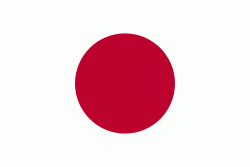Otaru (Otaru-shi)
 |
As of July 31, 2019, the city has an estimated population of 115,333 and a population density of 474.37 persons per km2 (1,228.6 persons per sq. mi.). The total area is 243.13 km2. Although it is the largest city in Shiribeshi Subprefecture, the subprefecture's capital is the more centrally located Kutchan.
The city was an Ainu habitation, and the name "Otaru" is recognised as being of Ainu origin, possibly meaning "River running through the sandy beach". The very small remaining part of the Temiya Cave contains carvings from the Zoku-Jōmon period of Ainu history, around A.D. 400. Mount Akaiwa (Northwest part of Otaru) is memorialized in the Ainu tradition in the story of Sitonai, village chief's teenage daughter who had slain a white snake from the mountain's cave that demanded sacrifices of girls every year. The legend explains the name of a big cave on Mount Akaiwa, Hakuryu Gongen Cave (白竜権現洞窟, lit. White Dragon Gongen Cave) and the reason why a shrine was built on the mountain (to protect the village from being haunted by the snake).
Otaru was recognised as a village by the bakufu in 1865, and in 1880 the first railway line in Hokkaido was opened with daily service between Otaru and Sapporo.
An Imperial decree in July 1899 established Otaru as an open port for trading with the United States and the United Kingdom.
The city flourished well as the financial and business center in Hokkaido as well as the trade port with Japanese ruled southern Sakhalin until the 1920s. Otaru was redesignated as a city on August 1, 1922.
On December 26, 1924, a freight train loaded with 600 cases of dynamite exploded in Temiya Station, damaging the warehouse, the harbour facilities, and the surrounding area. Local officials stated that at least 94 were killed and 200 injured in this disaster.
During World War II, Otaru housed a prison camp for Aleuts taken there following the Japanese occupation of Attu. During the closing stages of the war, Otaru was bombed by American naval aircraft in July 1945.
Since the 1950s, as the coal industry around the city went into a decline, the status of the economic hub shifted from Otaru to Sapporo.
Map - Otaru (Otaru-shi)
Map
Country - Japan
 |
 |
| Flag of Japan | |
Japan is the eleventh most populous country in the world, as well as one of the most densely populated and urbanized. About three-fourths of the country's terrain is mountainous, concentrating its population of 124.8 million on narrow coastal plains. Japan is divided into 47 administrative prefectures and eight traditional regions. The Greater Tokyo Area is the most populous metropolitan area in the world, with more than 37.2 million residents.
Currency / Language
| ISO | Currency | Symbol | Significant figures |
|---|---|---|---|
| JPY | Japanese yen | ¥ | 0 |
| ISO | Language |
|---|---|
| JA | Japanese language |
















